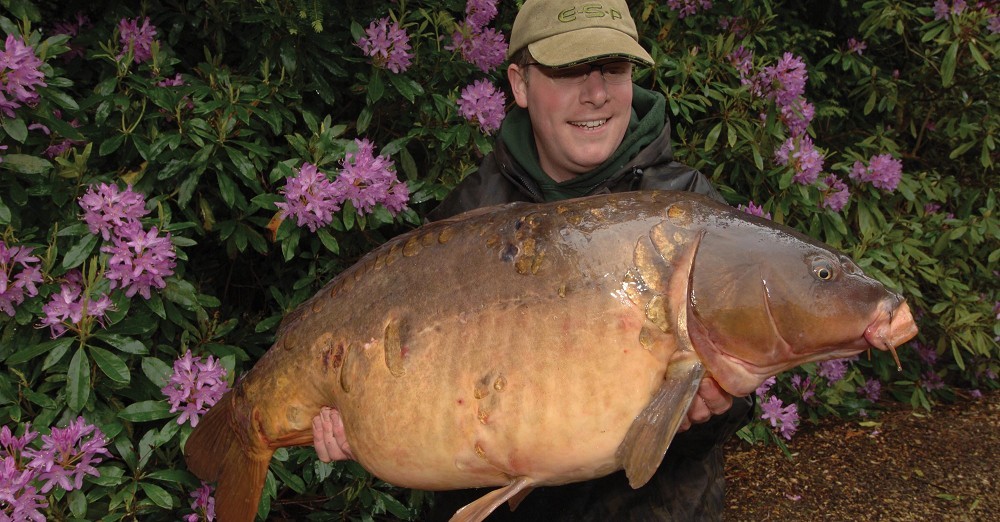
Opinion matrix: Early spring advice
Our experts talk feeding areas in spring, rock salt, baiting up and new season campaigns...
Q1: What tell-tale signs will you start looking for with the onset of spring to locate feeding areas, as the carp wake up? For example, one angler we know looks for the new, tender green shoots of weed growth, which in turn will be harbouring nice fresh spring food for the carp.
Dave Ellyatt: “I’ll look for shows and bubbling at first to hopefully give away their nocturnal feeding areas, but as a general rule I will fish snaggy areas during the day (or just observe them) and any promising or pre-baited open water zones at night as they vacate the snags to look for food.”
Julian Cundiff: “Without trying to teach my grandma to suck eggs, they are where they are. It’s the ideal time to spot carp before their strong feeding clouds the water making it more difficult. Reeds are my first choice then anywhere that gets the most sun in the day.”
Oz Holness: “During the spring I’m looking for areas the carp feel most comfortable to begin with. The warmest south facing bays and snags and any big rushbeds to begin with. Once the water warms and the weed takes off I look for the fresh silkweed… full of crustaceans.”
Q2: Many anglers reckon that the onset of spring is one of the best times to use mineralised rock salt, what’s your take on this?
Dave Ellyatt: “It’s well-known that carp like clay and can be seen in spring with patches of clay on their bodies. Clay contains salts and other minerals so carp possibly rub against it for its healing properties. As such they like salt, and pure Himalayan rock salt seems to be the best.”
Julian Cundiff: “Never bothered - that’s my honest answer. The bait I use (Nashbait Key) is naturally salty and with the Bait Soak that attraction is complete. I tend to stick with what I know and what keeps working so well.”
Oz Holness: “Rock salt in spring has always been a super effective way of attracting the carp to an area and your bait. They crave these minerals after the winter and particularly in the run up to spawning and as such, salty particles, liquids and cured boiled baits are almost like a drug to the carp!”
Q3: Will you start baiting known spring feeding areas prior to angling, watching and waiting, or do you go in straight away angling and feeding areas?
Dave Ellyatt: “Initially with particles, fishing the baited spots at the same time. Spring is not a time to wait so it’s kind of hit the ground running. I think excessive amounts of boilie too early feeds the birds on low stock venues and you’re better off getting them grazing on particle first with a nut or bright one over the top.”
Julian Cundiff: “I go straight in and try and get a few fish under my belt. Single hookbaits and maybe a scattering of bait. The only time I start to add a serious amount of feed is when I see them in open water more than in the snags and when they are definitely feeding strongly (bubbling, clouding water, etc.).”
Oz Holness: “My spring angling is usually a very mobile approach… early March and April I will move on shows and often fish different areas day and night. The night zones are usually pre-baited areas, although I don’t really give them lots of bait until May.”
Q4: If there were five must do’s or have’s for the new season campaign what would they be?
Dave Ellyatt: “(1) A freezer full of bait (particles, nuts and boilies), (2) fresh mono, (3) find the polarized sunglasses I haven’t used for months, (4) fresh rigs and (5) a positive mental attitude.”
Julian Cundiff: “(1) A year has four season’s so don’t kill yourself in spring. (2) Be patient, the warm weather carpers soon drift away. (3) If you’ve made tackle, bait and rig changes over winter, remember the starting points that serve you well. (4) Identify the shorter feeding spells. (5) Be prepared to move to showing fish.”
Oz Holness: “(1) Walk, walk and walk some more… you have to find the carp. (2) Never be without your polaroids (Fortis of course). (3) Be prepared to move day or night. (4) Do your own thing, don’t follow the crowds… be innovative. (5) Don’t go without a few packs of the new TA hooks.”
Q5: What do you think is your own strongest point when it comes to starting afresh either in spring or on a new water, or both?
Dave Ellyatt: “It’s one of the best times of year to be outside so bucketful’s of enthusiasm and optimism, and I think it’s when overnighters can be really effective as the nights get shorter and bite time gets earlier, so being able to do midweek nights can be a good edge.”
Julian Cundiff: “Experience without a doubt. Having carp fished for over thirty springs I know what messes it up and what works. It has taught me patience and not to get dispirited and that carp love sun, shallow water, shelter from cold winds and bright pop-ups.”
Oz Holness: “I would hope my experience and watercraft, alongside a high level of motivation and preparation, stand me in good stead when approaching the spring, or any new water come to that… It has to feel special, have the right atmosphere and I have to fall in love with it to really give it my all!”





